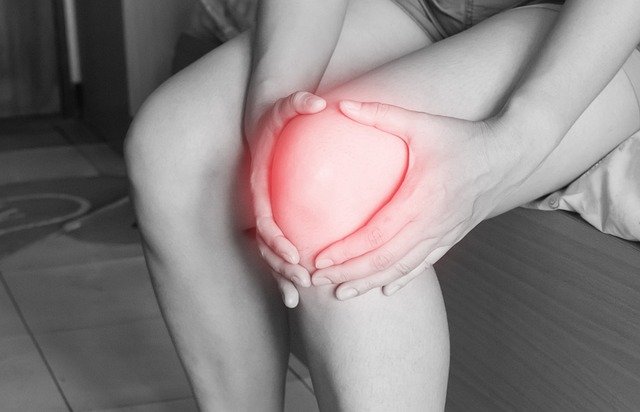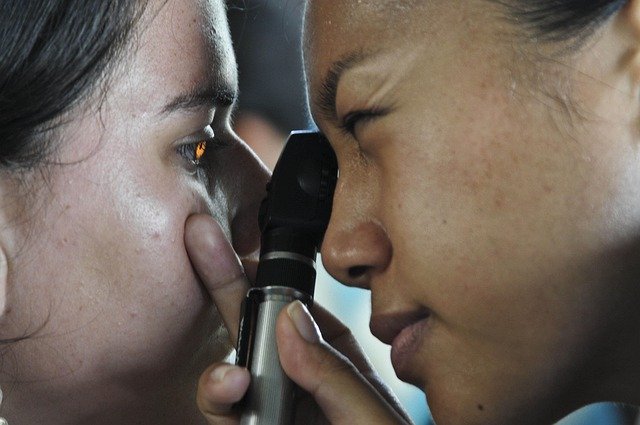Effective Knee Pain Treatment: A Comprehensive Guide
Knee pain is a common issue that can affect people of all ages, often limiting mobility and impacting quality of life. Whether caused by injury, arthritis, overuse, or underlying medical conditions, finding effective treatment is essential for restoring function and comfort. This comprehensive guide explores proven strategies for managing knee pain—from home remedies and physical therapy to medical interventions—helping you choose the best approach for lasting relief.

Knee pain is one of the most common musculoskeletal complaints that healthcare providers encounter. The knee, being the largest joint in the body, bears significant weight and stress during everyday activities. When pain strikes, it can severely impact mobility, independence, and overall quality of life. Fortunately, advances in medical science have provided numerous effective treatments for knee pain, ranging from simple self-care measures to sophisticated surgical procedures. This comprehensive guide aims to help you understand the various causes of knee pain and navigate the treatment options available.
Common Causes of Knee Pain
Knee pain can stem from various sources, and identifying the underlying cause is crucial for effective treatment. Osteoarthritis, the most common form of arthritis affecting the knee, occurs when the protective cartilage that cushions the ends of bones wears down over time. This degenerative condition typically affects people over 50 but can occur earlier due to injury or overuse.
Injuries represent another significant cause of knee pain. Anterior cruciate ligament (ACL) tears often happen during sports that involve sudden stops and changes in direction. Meniscal tears, affecting the shock-absorbing cartilage between the thighbone and shinbone, frequently result from twisting movements. Patellar tendinitis, commonly known as jumper’s knee, develops from repetitive stress on the tendon connecting the kneecap to the shinbone.
Inflammatory conditions such as rheumatoid arthritis and gout can also trigger knee pain. These autoimmune disorders cause the immune system to attack the body’s own tissues, including joint linings. Additionally, conditions like bursitis (inflammation of the fluid-filled sacs that cushion the knee joint) and Baker’s cyst (a fluid-filled swelling behind the knee) can cause significant discomfort.
Effective Treatment Options and Therapies
The treatment approach for knee pain typically follows a progressive pathway, starting with conservative methods before considering more invasive options. Rest, ice, compression, and elevation (RICE) remain the first line of defense against acute knee injuries. This simple protocol helps reduce swelling and pain during the initial healing phase.
Physical therapy plays a crucial role in knee pain management. Targeted exercises strengthen the muscles supporting the knee joint, improve flexibility, and enhance overall stability. A qualified physical therapist can design a personalized program addressing specific weaknesses and functional limitations. Studies show that consistent physical therapy can significantly reduce pain and improve function in conditions like osteoarthritis and after knee surgery.
Medications offer another avenue for pain relief. Non-steroidal anti-inflammatory drugs (NSAIDs) like ibuprofen and naproxen reduce both pain and inflammation. For more severe pain, doctors may prescribe stronger medications or consider corticosteroid injections directly into the joint. These injections can provide relief for months at a time, though their use is typically limited due to potential side effects with repeated administration.
Newer biological treatments include platelet-rich plasma (PRP) therapy and stem cell injections. These treatments use components from the patient’s own body to potentially stimulate healing and reduce inflammation. While promising, research on their long-term effectiveness is still evolving, and insurance coverage varies.
For severe cases that don’t respond to conservative treatment, surgical options may be considered. Arthroscopy allows surgeons to repair or remove damaged tissue using small incisions and specialized instruments. Partial or total knee replacement surgery replaces damaged portions of the knee with artificial components, offering significant pain relief and functional improvement for appropriate candidates.
Preventive Measures and Long-Term Knee Care
Prevention plays a vital role in maintaining knee health throughout life. Maintaining a healthy weight significantly reduces stress on knee joints. Each pound of excess weight adds approximately four pounds of pressure on the knees when walking, making weight management one of the most effective preventive strategies.
Regular, appropriate exercise strengthens the muscles supporting the knee joint, particularly the quadriceps and hamstrings. Low-impact activities like swimming, cycling, and elliptical training provide cardiovascular benefits without excessive joint stress. Proper technique during exercise is equally important—learning correct form for squats, lunges, and other knee-intensive movements can prevent injury.
Proper footwear offers crucial support for knee joints. Shoes with good arch support and cushioning help absorb shock and maintain proper alignment. For those with specific foot mechanics issues, custom orthotics may provide additional benefit by correcting gait abnormalities that place extra stress on the knees.
Rest and recovery deserve attention in any knee care regimen. Alternating high-impact activities with low-impact ones gives joints time to recover. Listening to your body and avoiding pushing through pain helps prevent minor issues from becoming serious injuries.
Integrative Approaches to Knee Pain Management
Beyond conventional medicine, several complementary approaches show promise for knee pain management. Acupuncture, an ancient practice involving the insertion of thin needles at specific points in the body, has demonstrated effectiveness for osteoarthritis pain in multiple clinical trials. Many patients report significant pain reduction after regular sessions.
Massage therapy helps reduce muscle tension around the knee joint, improving blood flow and potentially decreasing pain. Techniques focusing on the quadriceps, hamstrings, and calf muscles can be particularly beneficial for knee pain stemming from muscular imbalances.
Mind-body techniques like yoga and tai chi combine gentle movement with mindfulness, improving flexibility, balance, and body awareness. These practices strengthen supporting muscles while teaching practitioners to move in ways that minimize joint stress. Studies show they can be particularly helpful for older adults with knee osteoarthritis.
Nutritional approaches also play a role in managing knee inflammation. Anti-inflammatory diets rich in omega-3 fatty acids, antioxidants, and whole foods may help reduce systemic inflammation that contributes to joint pain. Supplements like glucosamine and chondroitin have shown mixed results in research but provide benefit for some individuals with osteoarthritis.
When to Seek Professional Help
While many cases of knee pain respond well to self-care, certain situations warrant prompt medical attention. Severe pain accompanied by significant swelling, especially after an injury, requires evaluation to rule out fractures or serious ligament damage. Inability to bear weight on the affected leg suggests a potentially serious condition requiring professional assessment.
Joint deformity, including visible misalignment of the knee, indicates structural damage needing medical intervention. Fever accompanying knee pain may signal an infection within the joint—a medical emergency requiring immediate treatment. Persistent pain that doesn’t improve with rest and home remedies should be evaluated, particularly if it interferes with daily activities or sleep.
Early intervention often leads to better outcomes and may prevent minor issues from progressing to chronic conditions. A healthcare provider can accurately diagnose the cause of knee pain and recommend appropriate treatment based on individual circumstances, medical history, and lifestyle factors.
This article is for informational purposes only and should not be considered medical advice. Please consult a qualified healthcare professional for personalized guidance and treatment.



